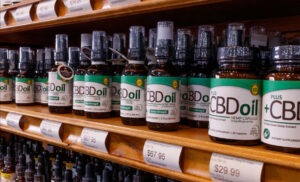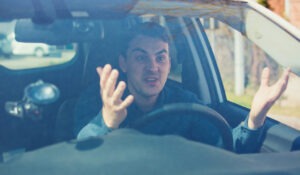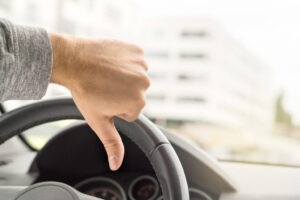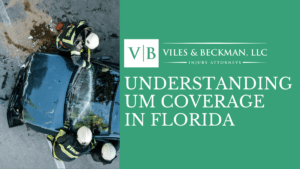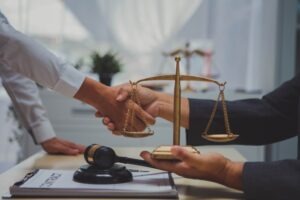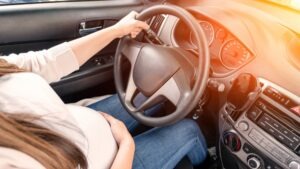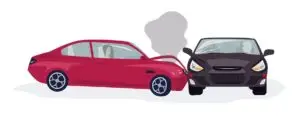
When the front end of a motor vehicle collides with the side of another vehicle, a broadside collision has occurred. Sometimes referred to as T-bone or angle collisions, broadside collisions are among the most dangerous and deadly of all auto crashes. The drivers and occupants of the vehicle hit on its side often lack the protections they would have in a front-end collision, such as crumple zones, airbags, and seat belts. Instead, only the door and frame of the vehicle protects them from injury or fatality.
This guide provides in-depth information about where broadside collisions most commonly occur. It discusses how they happen, where they most frequently occur, and driver behaviors which most often lead to these dangerous crashes. A thorough understanding of broadside collisions can help you avoid causing or falling victim to one as you travel Florida’s roads and highways from our experienced Fort Myers car accident lawyers.
Intersections Are the Most Common Site of Broadside Collisions
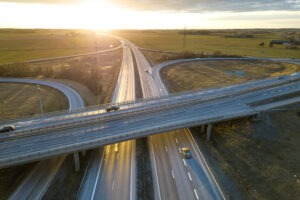 Broadside collisions occur where vehicles cross each other’s route the most often—at intersections. Intersections are the most dangerous place on roads and highways throughout the nation and the world. In fact, you might have noticed that many municipalities and counties have chosen to replace traditional intersections with roundabouts because they keep the traffic flowing and typically result in fewer accidents. Some specific characteristics associated with driving through intersections make them dangerous. They include:
Broadside collisions occur where vehicles cross each other’s route the most often—at intersections. Intersections are the most dangerous place on roads and highways throughout the nation and the world. In fact, you might have noticed that many municipalities and counties have chosen to replace traditional intersections with roundabouts because they keep the traffic flowing and typically result in fewer accidents. Some specific characteristics associated with driving through intersections make them dangerous. They include:
Human Error
On their own, intersections don’t cause accidents. Instead, they become dangerous when you add a crucial element: people. People driving cars, trucks, and motorcycles. People riding bicycles. And people crossing the street on foot.
Experts and engineers who study and build roads and intersection pay special attention to the role human error plays at intersections. Research has shown that humans typically process one piece of information at a time, which places great importance on the sequence in which they receive and use information to make decisions. Intersections confront people with a vast array of information to process all at once. If people at intersections do not process that information in the best sequence, then they put themselves and others at risk of an accident.
Points of Conflict Inevitably Lead to Broadside Collisions
The Federal Highway Administration (FHWA) spends millions of dollars each year to research safety issues, innovate new solutions and technologies, and implement new ideas and features to reduce injuries and fatalities on U.S. roads and highways. In its research, the FHWA refers to intersections as “planned points of conflict” in a roadway system. The FHWA estimates about one-fifth of all traffic fatalities and about 40 percent of all injuries occur at intersections, making them a focal point for safety improvement. Almost half of all crashes at intersections are broadside collisions (or, as the FHWA calls them, “angular” collisions). This makes them the most common type of crash which occurs at intersections.
Traffic Signs and Signals
Many intersections, especially in rural areas, do not have traffic control devices such as signals or stop signs, making them especially dangerous and a likely spot for broadside collisions. Yet, even when there are signs and signals to regulate traffic at an intersection, accidents still happen. Sometimes these accidents happen because drivers disobey signs and signals. Other times accidents result from poor road design.
When engineers design and build roads, they spend a great deal of time making decisions about the right traffic control features to include at a specific intersection, and sometimes they make the wrong decisions. Some considerations which play heavily into these decisions include:
- How much traffic will flow through an intersection and how often?
- Is the intersection located in a rural area or in the city?
- Will the intersection have a lot of pedestrian and bicycle traffic?
- How many lanes make up the intersection?
- What impact will a specific traffic control device have on flow?
- How do drivers respond to a particular traffic control device?
- Where is the best location to place the traffic control device so it has maximum visibility?
- What is the projected growth in the area of the intersection and will it affect traffic flow?
When engineers make wrong decisions or current traffic signs and signals don’t meet the needs of the area as it develops, those who use the road face a greater risk of broadside collisions and other types of accidents. Other engineering deficiencies which might lead to a broadside collision include durations for yellow lights which are too short. In these cases, drivers get trapped into running red lights. Controlled intersections whose signals aren’t easily visible also lead to motorists running a red light and potentially causing a broadside collision.
Turning Into Oncoming Traffic
Intersections, especially those which are not controlled, are also dangerous because sometimes motorists need to make a left-hand turn. Whether making this turn at a light or sign, or at a smaller intersection, even those with driveways and parking lots, drivers face the risk of a broadside collision. In fact, data from the National Highway Transportation Safety Association (NHTSA) show more than 53 percent of “crossing-path” crashes, a.k.a. broadside collisions or T-bones, involved left-hand turns.
Expect More, Receive More: Legal Support That Feels Like Family
Factors That Increase the Risk of a Broadside Collision
Certain driver-related factors, mechanical issues, and environmental factors can increase the risk of being involved in a broadside collision. Some of the most common factors include:
Speeding
Traveling safely through an intersection and avoiding a broadside collision requires slowing and/or stopping, especially when traffic control devices are in place. Drivers who speed reduce their ability to slow down and react to all the information coming at them when they approach an intersection. When drivers choose to speed, they greatly increase their chances of being involved in a broadside collision. Additionally, speeding increases the force of impact during a collision, often resulting in more severe or fatal injuries to drivers and occupants.
Distracted Drivers
The Florida Department of Highway Safety and Motor Vehicles (FLHSMV) defines distracted driving as “anything that takes your hands off the wheel, your eyes off the road or mind off driving.” Driving while distracted can lead to all types of accidents; distracted drivers cannot react or process information at an intersection, potentially leading to a dangerous broadside collision. Recent changes in Florida law make cell phone use, which isn’t hands-free, a primary offense, which means law enforcement can pull over a driver using their cell phone. Although texting and driving receives ample attention as one of the biggest distracted driving issues, many other types of distractions might lead to a broadside collision. Examples include:
- Personal grooming habits such as fixing hair, putting on makeup, and others
- Programming a GPS, adjusting climate controls, tuning a radio, and adjusting other vehicles in a motor vehicle
- Focusing on another accident or event outside of the vehicle
- Drinking and eating while operating a motor vehicle
- Talking with riders
- Attending to passengers and/or children in the backseat
- Daydreaming
- Reaching for items on the floor or in the backseat
Poor Visibility
Fog, rain, and sun can impair a driver’s ability to see an intersection, see traffic signs or signals, and see those with whom they share the road. When conditions lead to poor visibility, intersections become far more dangerous, especially for those who need to make a left-hand turn into traffic. Drivers need to keep sunglasses handy, maintain their wiper blades, and be prepared to slow down to avoid potentially causing or falling victim to a broadside collision. Additionally, using turn signals becomes crucial during times of low visibility. Other drivers need to see your intentions so you can avoid an accident.
Driving Under the Influence of Drugs or Alcohol
Driving while impaired is not only illegal, but it can lead to deadly accidents, including broadside collisions. Impaired drivers typically exhibit one or more of the following five symptoms:
- Slowed reaction time, making it especially difficult to react to traffic signs and signals
- Struggles with short-term memory
- Decreased hand-eye coordination which can make turns and steering difficult
- Lack of concentration making it difficult to process information at an intersection
- Struggles with judging time and distance, also making it difficult to appropriately react to traffic and traffic signals and signs
Drowsy Driving
Driving while drowsy or fatigued causes similar impairment to the body as caused by drugs and alcohol. Drowsy drivers also struggle with intersections, making it a common factor associated with broadside collisions. Lack of sleep or driving at odd hours impacts drivers in the following ways:
- Slows down thought processes and reaction time, making it difficult for drivers to respond at intersections
- Impacts vision and judgment
- Impairs driving ability in general
- Causes drivers to fall asleep at the wheel, which can result in a deadly broadside collision
Aggressive Driving/Disregard for Traffic Laws
Sometimes broadside collisions occur because a driver is driving recklessly and/or doesn’t care about the laws. This especially includes running red lights, running stop signs, and ignoring other traffic devices, or trying to “beat the yellow light” by racing through an intersection before the light turns red. When drivers intentionally ignore traffic control devices, they put others at risk for severe and fatal broadside collisions in intersections.
What Should You Do After a Broadside Collision?
Even if you drive carefully and avoid behaviors and situations which might lead to an accident, you still might be involved in a broadside collision because of another motorist’s actions. If you find yourself or a loved one in this situation, follow these steps to protect yourself and your rights.
- Call 911 and make sure emergency response teams and law enforcement come to the scene of the accident. Make sure you file a police report as soon as you are physically able. Broadside collisions are usually pretty serious, so it’s likely the police will have already begun a report. While you are waiting for teams to arrive at the scene, collect contact information, insurance information, and vehicle information from the other driver, if you are physically able.
- Seek medical treatment via ambulance or ride to the nearest emergency room. Some injuries, especially internal injuries and head injuries, don’t immediately show symptoms. Your health and well-being are of the utmost importance. Failure to seek treatment can be fatal, and medical documentation of any injuries is important for insurance claims and car accident lawsuits.
- Take photos. If you are physically able, take photos at the scene of the accident. Once tow trucks and street-cleaning crews show up, valuable evidence, which might help determine fault, will disappear. Use your cell phone to take pictures of the entire scene, property damage, license plates, and any visible physical injuries. These photos will be useful for insurance adjusters and the court, if you need to file a lawsuit.
- File an insurance claim under your mandatory Florida Personal Injury Protection (PIP) coverage. Florida is a no-fault insurance state, which means those involved in a broadside collision must file a claim with their own carrier first, before seeking compensation from any other source.
- Contact an experienced auto accident attorney. The severity of broadside collisions typically causes accident injury victims to quickly meet or exceed their PIP policy limits; in Florida PIP insurance only covers 80 percent of medical expenses and 60 percent of lost wages. To recover additional damages beyond your PIP policy, you will need to bring a lawsuit against the at-fault driver. A skilled car accident injury attorney will investigate the circumstances of your broadside collision, gather reports and documents, speak to any eyewitnesses, and build a strong case against the defense, so you have the best chance of getting the compensation you deserve.
- Only talk with your attorney about your case. If you have been involved in a broadside collision, well-meaning family members and friends will want to know all the details about your accident and court case. Insurance adjusters and investigators are tricky types who will try to use anything you say, or ones who are close to you say, to devalue your claim. It’s best to only communicate with your lawyer about your case. Similarly, it’s best to stay off of social media because the defense and insurance companies can potentially use comments and pictures you post to try to avoid some are all liability.
If you were in a broadside crash and want to know more about your legal right to compensation, a car accident lawyer can answer your questions and help you through the claims process.

